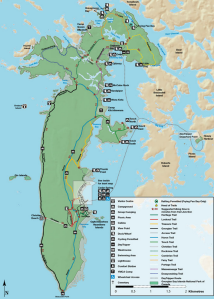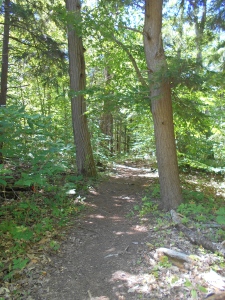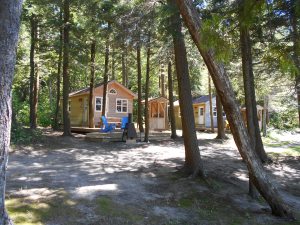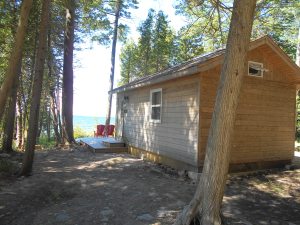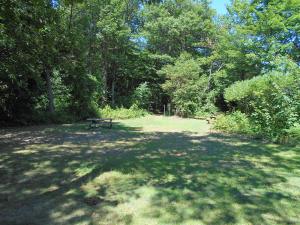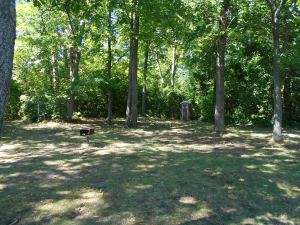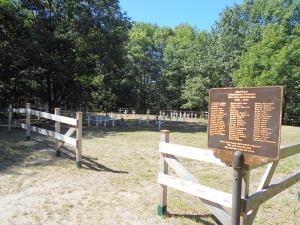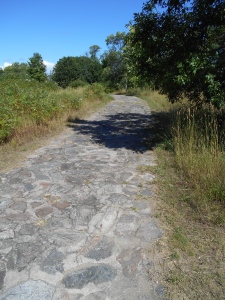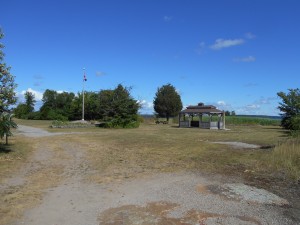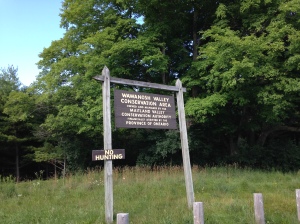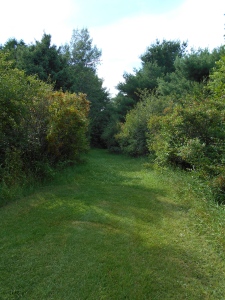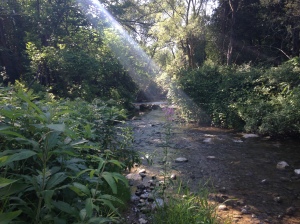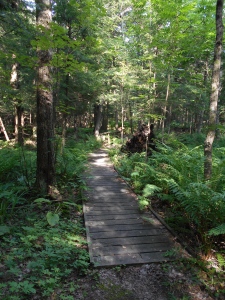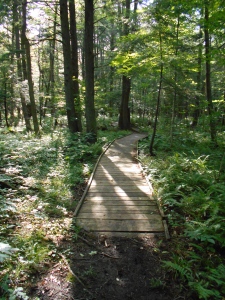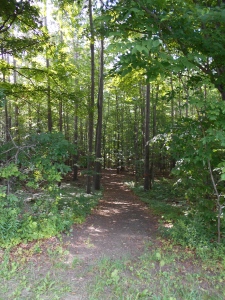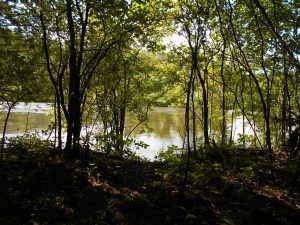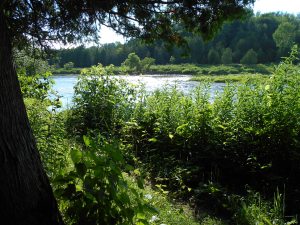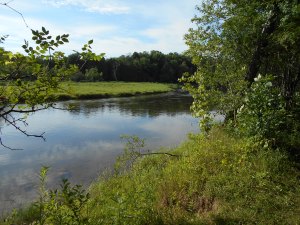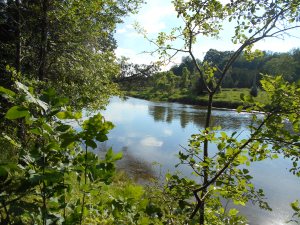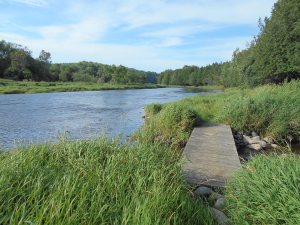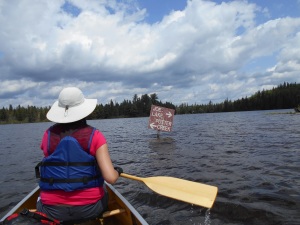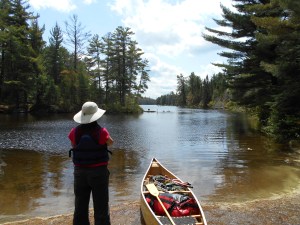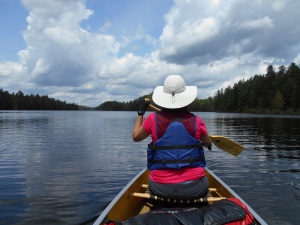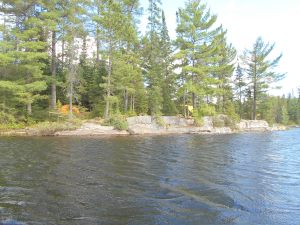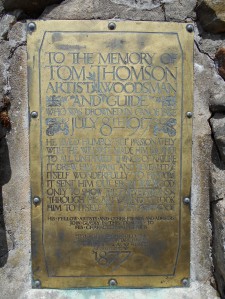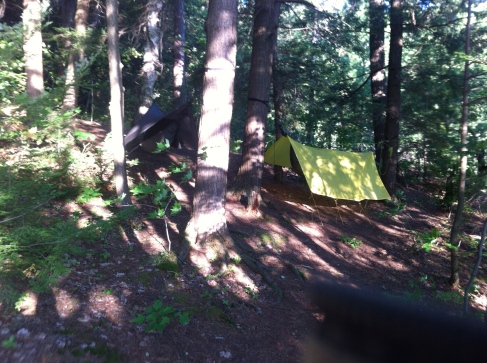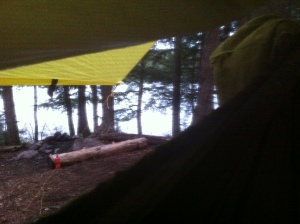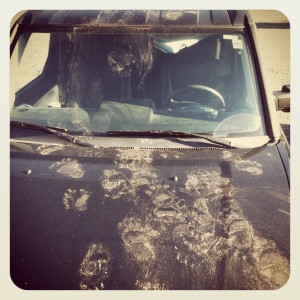Well, what a difference a year makes. No blog entries from me, no trips, no hikes (until this one, of course), BUT! – we did have a baby, so… y’all can understand why we had to take a bit of a breather. Now, baby is almost a year old, so we got him out on the trail as soon as we could and… he loves it! I mean… this kid L.O.V.E.S. being outdoors. Thank the Big Spirit in the sky for that.
And, before I dig into this short excursion, I’d just like to thank all y’all who’ve been checking this blog out while I’ve been away. The numbers don’t lie and it’s clear that there are a lot of you out there who are interested in these trails and parks, so keep checking back to see what new parks and routes get added.

Not only has life been busy with the recent addition of our little boy, work has kept me going 6 days/week since the winter. Suffice it to say, I’ve been lucky to get a 30 minute walk in once every week or two, let alone a full day of hiking in one of our beloved provincial parks. So, when a rare two-day weekend presented itself, I immediately pitched the idea of a hiking getaway that was received very well and signed off on by the Mama Bear of our clan.
Usually, I’m all about the backcountry and tent/hammock camping but, for many reasons (i.e. – schedule, time of year, child under 1), we opted for the more civilized way of doing things and we got a hotel room in Huntsville and just popped in and out of the park over two days.
It was the beginning of the second peak season in Algonquin because of the fall colours, so we were lucky to get a room at all, and the park was quite busy.
We arrived early on Monday, got to check into our room early as well, and got into the park around noon. It was raining. Rain doesn’t stop us, though. I love hiking and camping in the rain. Well… let me clarify – I like hiking in a light rain and I hate setting up or breaking camp in a downpour but, I do love being in the woods in the rain. There is something about experiencing nature in all of her moods.
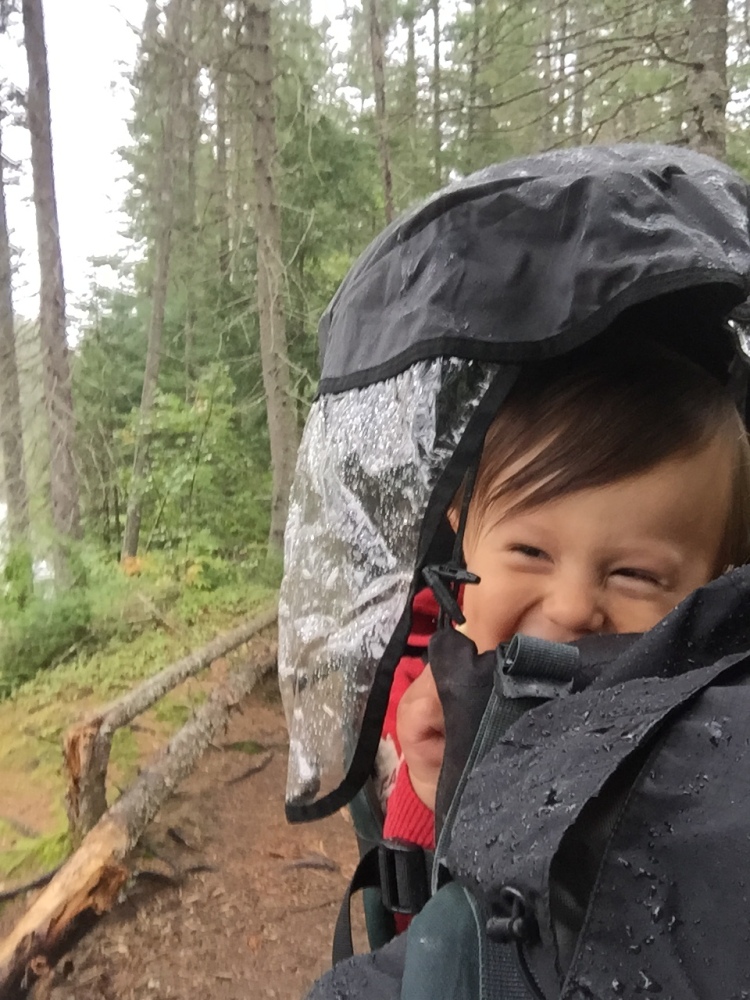
This is my 6th or 7th trip into Algonquin and, to date, I’ve only experienced the “Hwy. 60 Corridor”. I’ve only entered by the West Gate, never made it as far as the East Gate and all of my entry points have been either at the Western Uplands, Highlands Trail or the Canoe/Smoke Lake access point. In a word, my experience of Algonquin over the last 6 years can be described as: limited. Each time I come here, I only have enough time for the trip that I’ve planned and I always see the signs for Whisky Rapids, Track & Tower, Mizzy Lake etc. This time, I resolved to hike at least two more of the Hwy. 60 trails.
Whiskey Rapids is located 7.2 km into the park coming from the West Gate. It’s a 2.1 km loop that follows the Oxtongue River for about half of its length. It’s a quick hike, less than an hour.
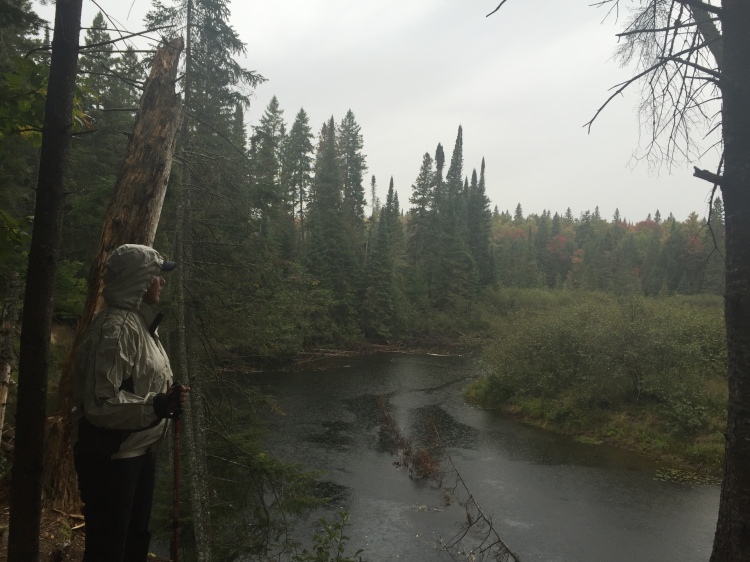
The Whiskey Rapids gets its name from an incident that occurred (according to the trail guide), at the turn of the 19th century. A few log drivers had chipped in to buy a barrel of whiskey and have it sent to the Canoe Lake railroad station. Upon shipping it home, via the Oxtongue River, the two who had picked it up (and inevitably sampled it before getting it to camp), tried to shoot the rapids and failed. Good thing they tasted it beforehand, because that’s all they would ever get to enjoy from that barrel…
This is a great trail for those who are looking for shorter hikes that aren’t too challenging. Now – a word about the “difficulty rating” of the trails in Algonquin: they are very subjective. In my opinion, every single trail that I’ve been on, so far, has had sections that could be considered “strenuous” or “difficult”, depending on your own personal situation. Me? I have knees that need to be considered and neck/shoulders that constantly require attention in the form of yoga and/or stretches. I always, always hike with poles.
If you’re in your senior years, you should consider every trail to be strenuous inasmuch as there will always be roots and rocks under foot and sharp inclines/declines at any given time. The fact is: if you want to get to a view or a “lookout”, you’re going to have to climb UP. And then, once you’re done, you have to climb back DOWN. It’s the DOWNward climb that I find hardest on the knees.
If you take away one thing from reading any of my blog posts, take this piece of advice: HIKE WITH POLES.
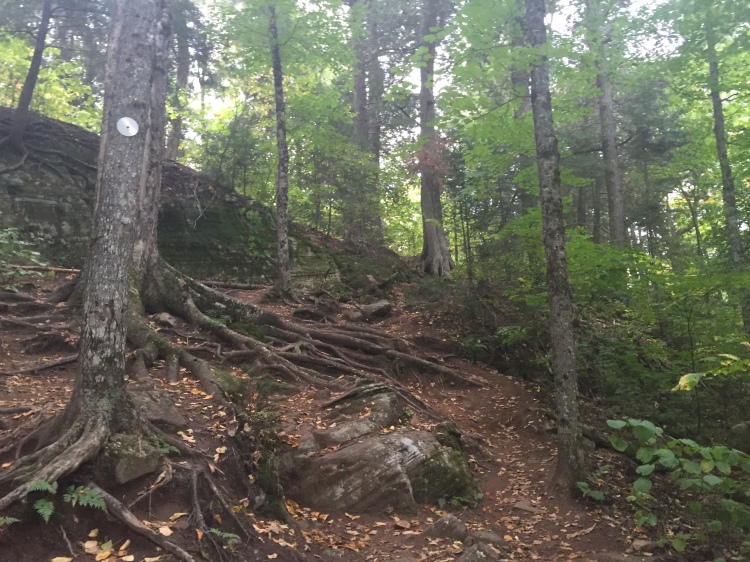
If you have bad knees or a bad back, please don’t let this scare you off from hiking. Just be prepared. Even for a short hike like this, use poles, bring water and a good loud whistle. There are sections of just about every trail that will leave you a bit winded.
Of course, there will be plenty of youthful, vivacious, avid hikers out there who scoff at the idea of using poles or the description of these trails as “challenging”, but… who cares what anyone else thinks, eh? Just getting your butt out there is all that matters.
In the final minutes of our hike, the rain started to come down hard. We got to the truck, dried off, and hit the road to enjoy a bit of a drive along the Hwy. 60 corridor. We checked out a few of the campgrounds, to see what the sites were like. Tea Lake campsite is small and had a number of good sites (although, it was closed for the season). We also checked out Mew Lake for the first time and it’s open year-round. A great place for RV’ers.
We headed back into Huntsville for dinner and a quiet night in at the Best Western. It feels a bit weird to give a hotel review on this blog, but: it was nice and I’d stay there again if I had to. The breakfast was decent. No complaints (except for the peak season price of $200/night). The rooms were modern and well kept.
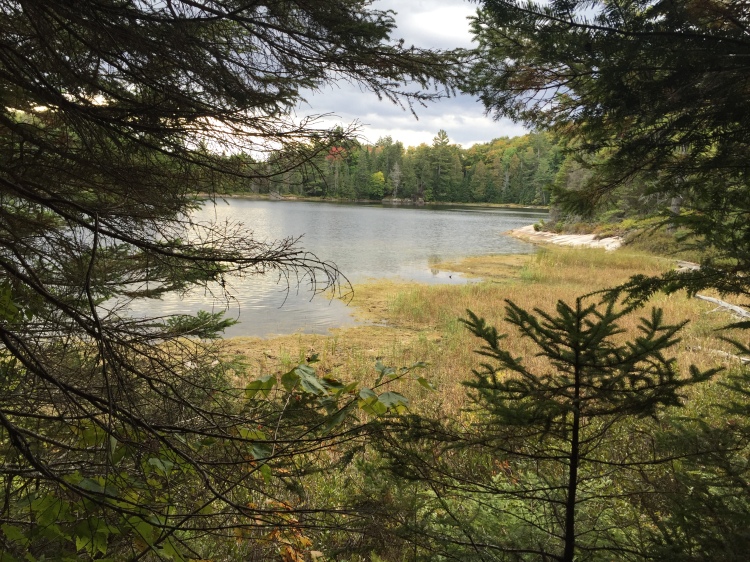
The next day brought us better weather. Cool and crisp, but sunny and no rain whatsoever. We packed a lunch of summer sausage and cheese, a few granola bars and 2L of water. The Track & Tower Trail has been on my list for a while, so I was chuffed to get the chance to check that one off (apologies for the alliteration…). The parking lot at the trail head was pretty busy, but once we got on the trail, we only came across 6-8 other hiking parties over the course of the day.
The Track & Tower Trail is 7.5 km, round trip and is well worth the effort. There are many rewarding sights along the way, with the lookout at Post #7 providing an absolute stunning view of the park. The lookout is about 4-ish km in from the trailhead. Truly, one of the best hikes that the park has to offer.
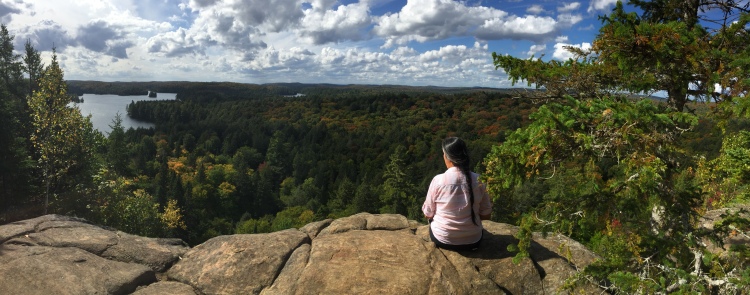
One thing that always strikes me when I’m hiking is the *effort* that gets put into making and maintaining them. When I see a boardwalk several kms into a hike I can’t help but think of the folks who had to shoulder all of the tools and materials there to build it all.
The stairs leading up to the lookout on the Track & Tower Trail are impressive for this very reason. Maybe there’s an entry point that a vehicle can access that gets them closer than the trailhead but, still… that’s a lot of wood and nails to carry. Not to mention the saw…
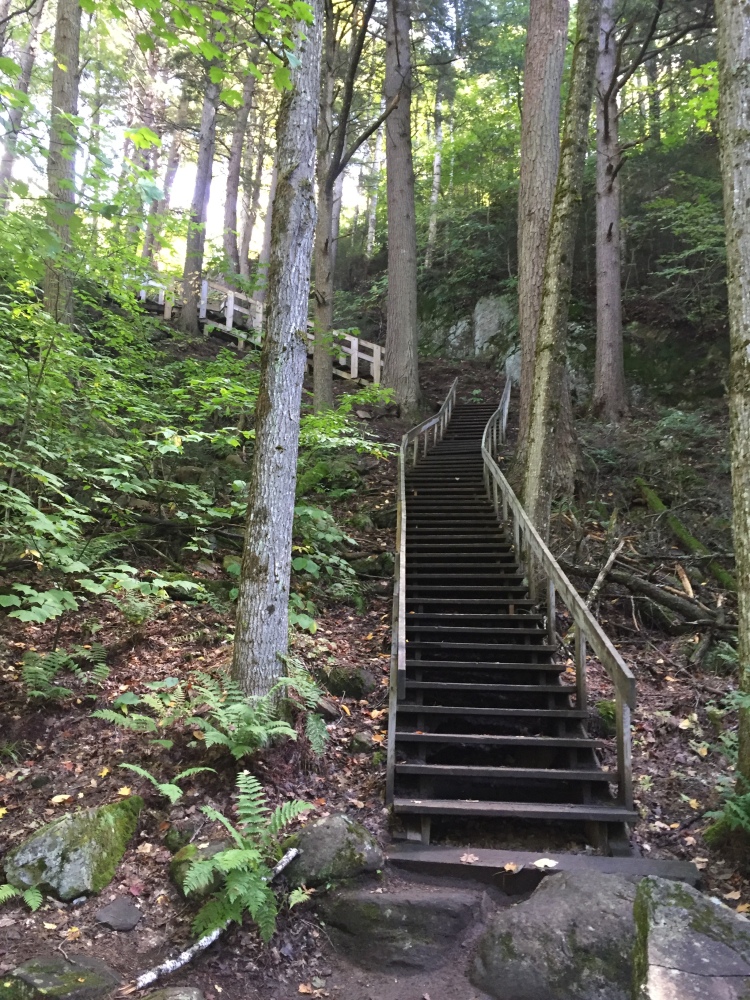
Shortly after leaving the lookout, you’ll walk over the old railway track at Post #9 and be standing on a completely man-made hill, though, you’d barely be able to tell that it isn’t just a natural part of the landscape. It’s truly amazing how the area has healed itself in the last 100 years since all of the logging action. A testament to nature’s ability to recover from the damage that humans inflict on her.
After the railway bridge, you’ll hook up for a short while with the bike trail and then continue on, back into the woods for the final stretch of the Track & Tower Trail that takes you back to the trailhead/parking lot. It’s a good 2.5 kms, and you’ll pass by Grant Lake on your way.
Along this stretch, you’ll pass by a large rock face covered in moss. Our boy loved getting up close and feeling moss for the first time.
All in, with a bit of a break at the lookout and one by the river by the bridge, this hike took about 3 – 3.5 hours. It was a beautiful day and we took our time.
The time estimates given by the park maps seem overly generous. Maybe this is to account for very slow walkers and err on the side of safety.
Thanks again for checking in with Canadian Park Hound! Please check us out on Facebook fb.me/canadianparkhound and give us a “Like”. There are some big changes here that will be announced very soon and Facebook is the only place that I can post the panoramic shots that I take along the way.
Bye, for now! Happy Trails!












